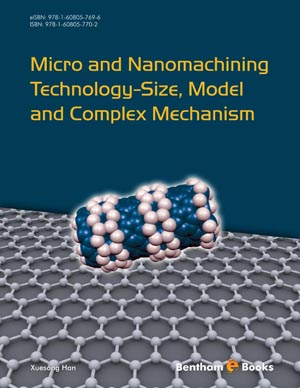Abstract
The physical process involved in the MNT is unique which makes it a special area of machining science. The reason for this is that the minimizing of the workpiece or machining precision level is greatly improved in the MNT comparing with the traditional machining technique. Mechanical properties of materials are scale dependent based on the strain gradient plasticity and the effect of dislocation-assisted sliding. When material is removed by machining, there is a substantial increase in the specific energy required with decrease in chip size. It is generally believed that this is because all metals contain defects (grain boundaries, missing and impure atoms, etc.), and, when the size of the material removed decreases, the probability of encountering a stressreducing defect decreases. Furthermore, the dominate role of the volume force in the larger scale is replaced by the surface force such as adhesive force at this micro & nanolength scale. The generation and dissipation of heat and the materials plastic deformation also involved different control mechanism from the macroscopic scale. Traditional metal cutting principle cannot give a reasonable explanation about phenomenon in the MNT. MNT is a novel challenge that should be studied in depth using ideas of modern physics that deals with the problems of complexity. This chapter devoted to the introduction of studying MNT using complexity theory (selforganization, nonequilibrium thermodynamics, fractal theory etc.) and some new corresponding developments.
Keywords: Complexity, dynamic evolution, self organization, dynamic equilibrium, energy dissipative mechanism.






















